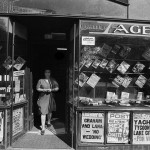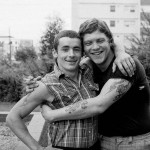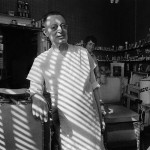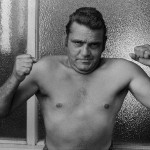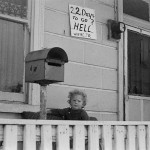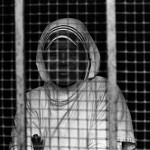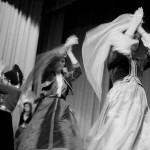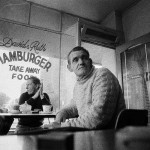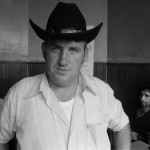Robert Ashton
A portrait of Fitzroy in 1974
Robert Ashton
04/09/14 – 27/09/14
Image: Builders Arms 1, 1974
Extract from The Age below:
Despite the childhood exposure to some of the old rough-house stories, what I didn’t really understand at the time was that the Fitzroy I had moved into was already deep inside a cultural and historical shift, a moment of transition that had been slowly building for some years. Over a decade earlier in 1973 the phrase ‘‘New Order’’ had yet to take on any NME irony and the gingham pinafores on the ladies operating the urn at the bowling club were not so much de rigeur as practical. But even by 1973, Fitzroy had begun to change. During the late 1960s, a rich multilingual community of hardship and glory had been knocked over to make way for the housing commission flats abutting Gertrude Street. Previously dispossessed Aboriginal families, Greek and Italian families who had taken the heart-rending gamble to leave the post-war Mediterranean, had now been displaced all over again, their iron, brick and timber cottages and
lean-tos bulldozed to make way for the ultra-rational Le Corbusierian vision of vertical public housing.
Although he grew up in the northern suburbs, in 1973 photographer Robert Ashton was pretty much an interloper in Fitzroy in 1973, not only because he was part of a new breed with ‘‘artistic tendencies’’, but also because he lived on the other side of town, where he shared a Greville Street studio with his cousin and photographic partner Rennie Ellis. The writer and musician Mark Gillespie was also part of his circle and had become involved in a new publishing venture, Outback Press, with Fred Milgrom and Morrie Schwartz, now the guiding hand behind Black Inc. Gillespie had become fascinated with the texture and intensity of the changing Fitzroy, the kids on the prowl, the old Salvo street bands, the Koorie clans, the shadows and glare of treeless bitumenous light. He had the idea for a book documenting the cusp, the cultural superimpositions that were taking place right before his eyes.
All photographs are pigment ink on cotton rag, 1974
Edition of 5 + 2AP




